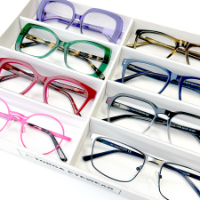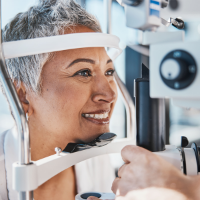Age-Related Macular Degeneration
AMD: Have Your Eyes Wide Open
One of the best things about growing older is the wisdom that experience provides; gratitude for the really important things in life, and the time to do the things that we really enjoy. So much of what we took for granted when we were younger becomes precious – such as our family, friends and our health.
At Torga Optical, we care about our patients and want to shine a spotlight on eye health and, in particular, age-related macular degeneration (AMD). This progressive eye disease is one of the leading causes of vision loss in the world.
The two most important facts relating to AMD are, firstly, that there is no cure; and, secondly and fortunately, the progression of the disease, if detected early, can be decelerated with corrective behaviour such as diet and lifestyle.
It’s important that you get as many facts as possible, so that you can get a full understanding of this degenerative eye disease. Let’s start with the basics.
Firstly, what is macular degeneration?
Macular degeneration is what happens when the area of the retina with the most light-sensitive cells deteriorates. (This, to some extent, is part of the normal ageing process.) This part of the retina is called the macula and is what gives us our central vision. Without the macula, we are unable to see enough detail to read and write, drive, and literally look someone in the eye. Loss of this central vision can make it difficult or even impossible to do many of the things that we enjoy and take for granted, therefore having a direct impact on our quality of life.
Who is more likely to develop AMG?
- People over a certain age:
Although AMD may occur earlier, studies indicate that people over age 60 are at greater risk than younger people.
- Certain races:
Caucasians are much more likely to develop and lose their vision due to AMD than Africans or African-Americans are.
- Family history:
According to various studies, your chances of developing AMD are significantly higher if you have a parent, child, or sibling with macular degeneration.
What are the symptoms of AMG?
AMD is painless and, as there may be no symptoms in the early stages, it is advisable to have an OCT (Optical Coherence Tomography) scan during an eye examination at least once a year after the age of 40. An OCT machine uses light waves to take a cross-sectional picture of your retina. From these images you can see the different layers of the retina and assess their thickness. These measurements are used for diagnosis and monitoring of certain eye diseases that affect the retina, including AMD.
Note: this scan does not usually form part of your normal eye exam i.e. you may have to ask your optometrist specifically to perform it. (There may be an additional cost.)
As macular degeneration progresses, you may start to notice blurry patches or dark spots start to appear within the central part of your vision. Objects may look less bright than they used to, or they may appear distorted.
How does AMD progress?
There are two main types of AMD: dry and wet. Dry macular degeneration is far more common than wet AMD and occurs when the tissues of the macula thin over time, typically accompanied by fatty deposits in the retina. The effects tend to be less serious than those of wet AMD.
Approximately 10% of dry AMD cases will progress to wet AMD, which occurs when new, unstable blood vessels grow under the retina. These vessels can leak fluid and scar the macula, causing more rapid vision loss than dry AMD.
Is it possible to prevent or delay AMG?
You can do a lot to reduce your risk of developing AMD or slow its progression with an early diagnosis. The key is early detection and a healthy lifestyle.
What can one do to prevent or decelerate AMD?
- Stop smoking!
If you currently smoke, you are a lot more likely to develop macular degeneration than someone who has never smoked.
- Protect yourself from blue light
Put on your sunnies! Get some spectacles with blue-light blocking lenses!
It is the blue wavelengths from sunlight and light emitted from digital devices that can also damage the macula, not the ultraviolet (UV) rays. Click here to read more about the dangers of blue light.
- Start eating healthily
Processed foods contain all sorts of chemicals and artificial oils that encourage inflammation. There are many nutrients found in fresh and unprocessed foods that can help to delay the progression of AMD. (Click here to learn more about a diet fit for healthy eyes.) Being overweight significantly increases the risk of developing macula degeneration. Eat healthily and exercise regularly.
- Have your blood pressure and cholesterol checked often
People with hypertension and high cholesterol have a higher risk of developing wet macular degeneration than people with lower blood pressure and healthy levels of cholesterol.
What is your Optometrist’s role?
With both types of AMD, regular eye exams are essential for early detection. There is currently no cure for AMD, but diagnosis is crucial to slow the disease’s progress.
The above article was compiled with professional consultation from Claire Wiggill (BOptom (RAU)).
References:
MD Foundation 2018, Macular Disease, MD Foundation, accessed 12 April 2018, https://www.mdfoundation.com.au/content/macular-disease











